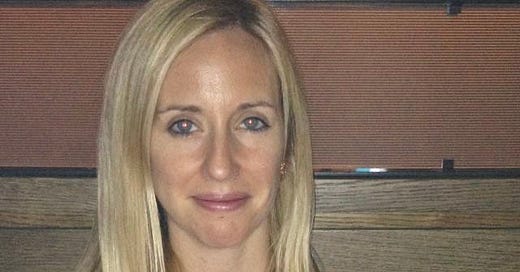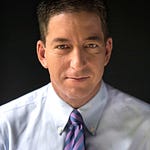Hello! Welcome to another episode of the Inside The Newsroom podcast. It’s been a while since we hit the airwaves, but now that the paywall is up and the bulk of the world’s elections are completed, I plan to bring you a podcast every week until Christmas. Leading things off is my colleague Louise Story, The Wall Street Journal’s Chief News Strategist and Chief Product and Technology Officer. We talked about how Louise rose through the newsroom, a couple of crucial management concepts she learned at business school, and the emergence and future of strategy within journalism. We also mentioned the rise of newsroom strategy jobs, so I’ve listed below a selection of relevant postings we recently added to the job board. Tomorrow marks the 10th anniversary of the launch of Instagram, so take a read of this masterpiece by The New Yorker’s Jia Tolentino on The Age of Instagram Face. As ever, thank you for supporting the newsletter. You are literally the ones that make it happen. 🙏
Job Corner
Full-Time
Internships
Who is Louise Story?
Louise is currently The Wall Street Journal’s Chief News Strategist and Chief Product and Technology Officer. She returned to WSJ two years ago having interned there in the summer of 2004, and previously spent the bulk of her career at The New York Times in various reporting, editing and strategic positions. Before all of that, Louise put the time in to acquire the necessary skills and knowledge in the classroom, gaining a bachelor’s degree in American Studies from Yale, a master’s in journalism from Columbia before returning to Yale for an MBA. She now leads a team of more than 150 people at the Journal known as DXS — Digital Experience & Strategy — all working toward the goal of making WSJ more of an audience-focused newsroom. Perhaps her largest project to date was orchestrating a content review that involved reading more than 7,000 articles in two weeks to understand what type of content resonates most with readers. Like most of us, Louise didn’t get to where she is without the help of others, which is why she’s making herself available on her personal email to answer questions about her career, the future of strategy and journalism, and how to get involved with DXS at the Journal. Email her below… 👇
Louise 👇

The Rise of Strategy in the Newsroom
Strategy within journalism is nothing new, at least it wasn’t for well-functioning newspapers before the advent of the internet. Without reducing newsrooms’ old strategy to a single line, it was largely “maximise reader engagement in order to maximise newspaper sales,” and that often fell to marketing and sales teams while reporters and editors concentrated on what they did best. Healthy revenues from a combination of advertising and newspaper sales likely made strategy relatively seamless. Then came the Dot-Com boom in the mid-to-late-90s, which saw most newsrooms, including The New York Times, The Wall Street Journal and The Guardian, launch their websites, and suddenly journalists were forced to think about reader engagement and then social media when Facebook and Twitter became mainstream around 2010.
What’s different in today’s newsrooms is the pace of technological change and number of threats from technology companies — In 2000, newspapers and magazines held half of all advertising spending, but that share has since declined to less than 10 per cent, with the likes of Google and Facebook swallowing the bulk of that, according to GroupM, a WPP-owned media agency. In order to survive, newsrooms have been forced to think like these tech giants, whether it’s implementing subscription models or hiring data scientists and UX designers to study their users. What’s most exciting is the fact that this section of the newsroom is still fledgling, highlighted by Louise’s transformation of the DXS team, which wasn’t a thing just two years ago. Whether it’s at the WSJ or elsewhere, there’s probably never been a better time to enter the strategic field.
Related Podcasts
#74 — Major Garrett (CBS News)
#70 — Amy Webb (Future Today Institute)
#67 — Sarah Nöckel (Femstreet)
Are You a Book Quitter?
Managing and setting goals for more than 150 people is no joke, heck, having the time to meet your own daily and weekly targets is hard enough. That’s why Louise is exceedingly aware of the sunk cost concept, the idea of accepting an amount of time or money has already been spent and cannot be reclaimed. For example, have you ever bought a book and realized within the first couple of chapters that this particular book just isn’t for you? Yeah, we all have, but are you the person to stop there and move onto another one, or is the fact that you’ve spent $10 or £10 on it enough to keep you reading even though finishing the book will offer little value?
That doesn’t mean to say you should never finish anything. Our best work often takes hard work, dedication and a bloody long time to complete. But that’s where the more stories and projects you work on, the better your judgement will be in assessing which ones you should see through to the end, and which ones are just a drain on resources. I’ve found that since I started working in data journalism, which has involved a lot of coding and formulas, my decision making is a lot more like a computer algorithm, which brings us onto our next section…
Thinking Like a Computer
I started studying data journalism five years ago and have worked with datasets containing up to a million records. For most projects, there’s simply not enough time to manually observe what’s on each row of a spreadsheet, plus that’s just really boring. So I’ve had to learn some programming languages in order to automate the task of sorting and analyzing these large datasets. Part of that process has involved writing effective algorithms, which only work if you tell the computer exactly what to do and exactly when to do it. If you’ve worked with code before, you’ll be familiar with if/else statements. For those that haven’t, an if/else statement is simply a way to make decisions based on different conditions. For example, if tomorrow’s weather forecast is sunny, I’ll go for a walk in the park, but if tomorrow’s weather turns out to be anything else, I’ll stay home and be a lazy ass. This is a very simple yet effective way of “computational thinking”, and thinking like a computer has many other benefits…
Perhaps most beneficial for me has been the ability to eliminate as much emotion as possible when making decisions, just like a computer. For example, I deal with breaking news a few times a week. If I let my emotions — fear of failure, imposter syndrome, hunger — drive my decision making, my work would suffer. Instead, as soon as I’m handed an assignment, I write down the first handful of things I need to do, and out of those I decide what needs to be done in which order to complete the job as quickly and to the highest quality as possible. All I’m doing is creating an algorithm. Additionally, making decisions rationally and level headed before they have to be made — for example before a big meeting with your manager — can be crucial in not letting yourself make dumb choices based on too many emotions swirling inside your brain. I’ve touched on all of the above in the past with two legendary psychologists and behavioural economists, Cass Sunstein (Harvard University) and Art Markman (University of Texas), which you can listen to below…
Louise’s Predictions for the Future
Louise had several thoughts on what the future for journalism might hold. One of which was the choice media brands will be forced to make between having their content distributed by third-party platforms or keeping all of it in-house on their own websites. So what does Louise mean by that? Well, we’re certainly going to continue to see the likes of WSJ and The Guardian keep the bulk, if not all, of their content hosted on their own websites. And maybe we’ll see more subscription partnerships similar to the one The Washington Post and the Financial Times launched recently. But doing so means it’s essential to know everything about your users, which is of course not an easy thing to do. The BBC found that out the hard way by spending £10 million/$13 million on rebranding its suite of podcasts and radio shows into BBC Sounds, and is now facing a review by Ofcom over complaints it has squeezed out its competition.
The alternative looks something like the recent $100 million/£82 million Spotify will pay Joe Rogan to exclusively license and host all of his podcasts on its platform. While that’s obviously not possible for everyone, more platforms such as Luminary, which also pays podcasters to exclusively host their content, have sprung up. Another of Louise’s predictions is the acceleration of artificial intelligence and computational journalism in creating tools to not only make reporters’ jobs easier, but also to enhance the overall storytelling experience for readers. In fact, I had one of Louise’s former WSJ colleagues on the podcast a few months ago, Francesco Marconi, who left the Journal in February to launch his own company, Applied XL, which develops new data tools to track the health of people and places around the planet. 👇
That’s all for this week. If you enjoyed today’s podcast newsletter, consider telling a friend by sharing it or even gifting a subscription to someone you think might enjoy this type of content too. See you later in the week for roundups of elections in Czech Republic, Kyrgyzstan, New Caledonia, Italy, Bermuda and the Falkland Islands. 👋














Share this post